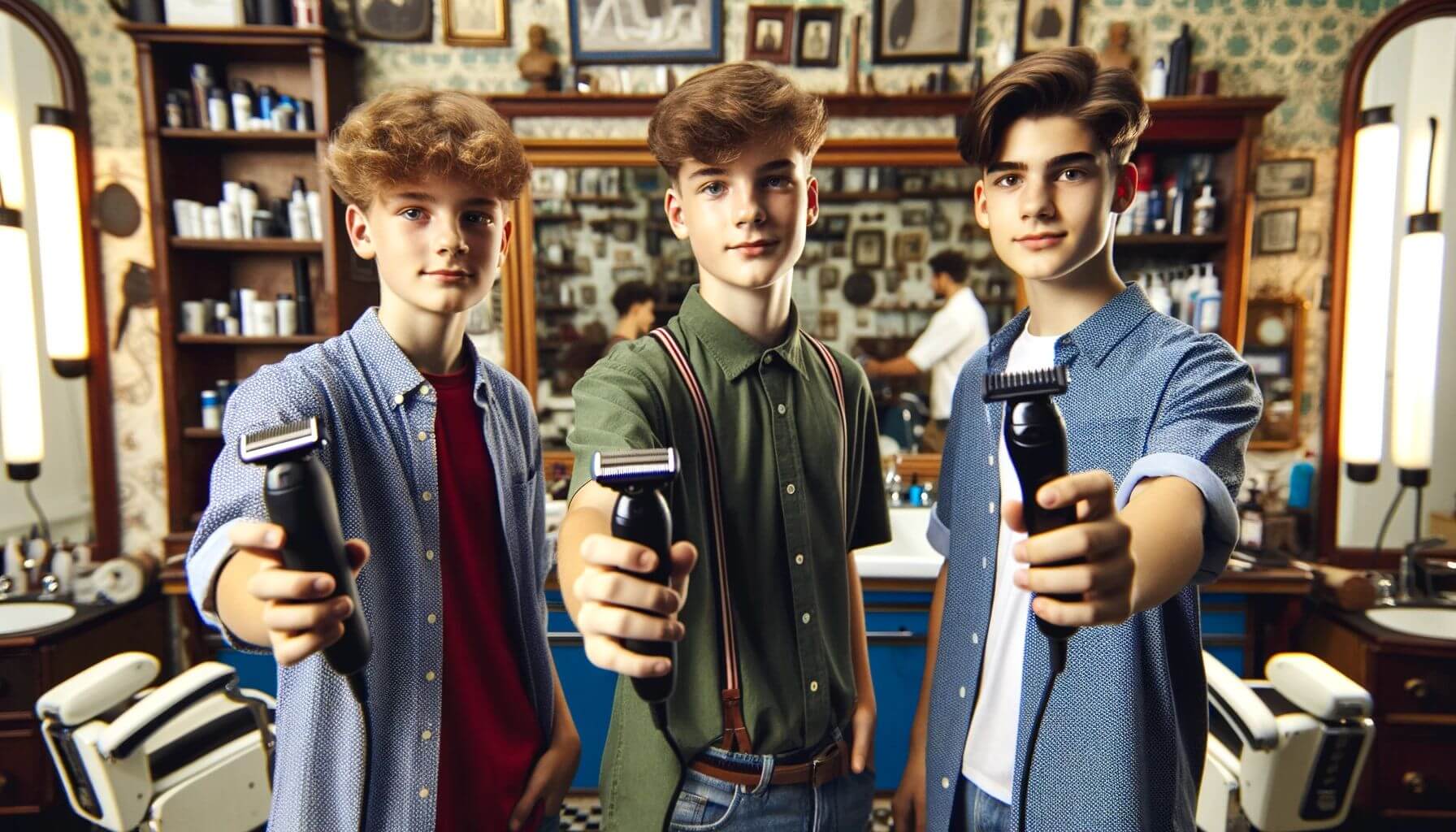Ah, the joys of facial hair! For some, it's a natural blessing, a sign of virility and maturity. For others, it's a quest that seems as remote as the search for the Holy Grail. Do you recognize yourself in the latter group? Perhaps you've wondered, like so many others before you, whether a beard transplant could be your ticket to the Olympus of distinguished beardsmen.
Look no further, you've come to the right place! Welcome to our comprehensive guide to beard transplantation: a (barely) frightening but oh-so-rewarding journey that will transform your bare face into a welcoming roof for beautiful facial fur.
In this guide, we'll dissect everything you need to know about beard transplantation, from the crucial choice of your surgeon to the thrilling recovery phase. We'll talk about donor areas (don't worry, we're not talking about your precious vinyl collection), the subtle art of graft implantation and what makes your new hairy face so irresistible.
And if you're afraid of needles or the word "surgery", don't worry! We'll also introduce you to gentler alternatives for stimulating your hair growth. So, are you ready to step into the big leagues? Right, put your towel around your neck, get your best beard comb ready and let's get going!
What is a beard transplant?
Beard transplantation is a meticulous, specialized surgical procedure designed to improve beard density and coverage. The procedure, performed by a qualified healthcare professional, involves harvesting healthy hair follicles, usually from the back of the scalp, and implanting them in areas of the face where beard growth is desired.
It's a permanent, natural solution for increasing beard density, filling in sparse areas, or creating a full beard. This procedure improves appearance and self-confidence. Requiring professional expertise and a clear understanding of the patient's goals, it's a serious option for those seeking to solve problems of low beard density or absence.
What are the donor zones?
The most common donor areas for a beard transplant are usually areas of the scalp. More specifically, these areas include:
- The occipital area : This is the area at the back of the head, between the two ears. The hair follicles in this area are generally resistant to baldness, making it a preferred source for beard transplants.
- The parietal area: Located on the sides of the head, it is sometimes used as a donor area, especially if the occipital area is insufficient or unsuitable.
In rare cases, other areas of the body, such as the chest or legs, can be used, but this depends on the quality and density of the hair in these areas, as well as the compatibility of this hair with that of the beard.
The stages of a beard transplant: how does it work?
- Pre-operative consultation (1-2 weeks before surgery) This stage involves assessing the donor and recipient areas, discussing expectations and goals, and planning the procedure.
- Preparation (day of operation) The patient is prepared for the procedure. The hair in the donor area is usually shaved, and a local anesthetic is administered.
- Graft harvesting (2-4 hours) Hair follicles are removed one by one from the donor area, generally using FUE (Follicular Unit Extraction) techniques.
- Graft preparation (1-2 hours) The harvested follicles are sorted and prepared for transplantation.
- Graft implantation (2-4 hours) The hair follicles are implanted one by one into the recipient area, following the established grafting plan.
- After the operation (Day 1) The patient can go home with precise instructions for caring for the grafted area.
- Post-operative follow-up (1 week - 1 month after surgery) The patient usually has one or more follow-up appointments to check on healing and the progress of the graft.
- New hair growth (3-4 months after surgery) New hairs begin to grow from the transplanted follicles.
- Final result (9-12 months after surgery) The final result of the graft is usually visible after 9 to 12 months, when all the new hairs have grown in and the beard has reached its final density.
It's important to note that this timeline is a general estimate and that the exact process and time required may vary depending on the patient, surgeon and grafting method used.
Common questions
How long does a beard transplant last?
A beard transplant generally takes between 4 and 8 hours, depending on the number of grafts required and the technique used.
How many grafts are needed for a beard transplant?
The number of grafts required depends on the desired density. On average, a full beard transplant requires between 2,000 and 3,000 grafts.
FUE (Follicular Unit Extraction) vs DHI (Direct Hair Implantation)
FUE and DHI are two different beard transplant techniques. FUE involves harvesting and then transplanting follicles, while DHI uses a special pen to implant follicles directly after harvesting.
Is it possible to do a hair transplant with beard hair and vice versa?
Yes, beard hair can be used for a hair transplant and scalp hair can be used for a beard transplant, depending on the quality and density of the hair.
Is it safe to have a beard transplant?
Yes, when performed by a qualified professional, beard grafting is generally safe with a low risk of complications.
Are beard transplants permanent?
Yes, once the hair follicles are implanted and set, the results of beard transplantation are usually permanent.
Do beard transplants look natural?
Yes, a well-done beard transplant gives natural-looking results because the hairs are transplanted one by one, respecting the natural direction of hair growth.
Is it possible to use pubic hair for a beard transplant?
In theory, yes, but in practice, pubic hair is generally not used because of its different texture and growth.
What is the success rate of a beard transplant?
The success rate of a beard transplant is generally high, often exceeding 90%, assuming the patient follows proper post-operative care and the procedure is performed by a qualified professional.
Post-transplant recovery and maintenance
- Time : It generally takes between 10 and 15 days for redness and scabs to disappear after a beard transplant. Final results will not be visible for 9 to 12 months.
- Care It is essential to keep the grafted area clean and avoid touching or scratching it. Follow your doctor's instructions regarding cleaning and the application of any medication.
- Maintenance For the first few months, avoid shaving or trimming to allow new hair to grow. Use gentle, natural beard care products.
- Avoid strenuous exercise To avoid bleeding or graft damage, strenuous physical activity should be avoided for at least a week after transplant.
- Sun protection Newly grafted skin can be particularly sensitive to the sun. It is therefore advisable to avoid direct exposure to the sun for several weeks after the transplant, or to use appropriate sun protection.
- Nutrition and hydration A healthy diet and good hydration can help improve healing and new hair growth.
- Follow-up visits Make sure you keep all follow-up appointments with your doctor to monitor the progress of your transplant and address any concerns you may have.
- Patience New hair growth can take time, so it's important to be patient and not expect immediate results.
Dangers and side effects
Of course, beard transplantation, like any medical procedure, involves risks and potential side effects:
- Redness and swelling : This is a common side effect after transplantation. These symptoms should resolve within a few days.
- Pain and discomfort Pain and discomfort are normal after surgery, but can usually be managed with painkillers.
- Infection and bleeding Although rare, infections and bleeding can occur, especially if postoperative instructions are not properly followed.
- Scars Scars may occur in both the donor and recipient areas, although the FUE technique generally minimizes their appearance.
- Pimples after beard transplant Pimples may sometimes develop on the grafted areas due to changes in the skin and newly implanted hair follicles. This can also be a sign of infection and should be reported to your doctor. Generally, these pimples disappear as the skin heals and adapts to the new hair follicles.
- Loss of sensitivity Some people may experience a temporary loss of sensitivity in the affected areas, which generally recovers over time.
- Transplants hair loss In the weeks following surgery, transplants may fall out. This is normal and part of the new hair growth process.
- Unsightly results In rare cases, if the operation is not performed correctly, the results may appear unsightly, with hair growing in random directions.
- Unsatisfactory results : The density of the beard or the overall appearance may not live up to the patient's expectations.
It's important to discuss all these risks and potential side effects with your surgeon before undergoing a beard transplant.
Choice of surgeon: the importance of experience and competence
The choice of surgeon for a beard transplant is essential and can greatly influence the result. The surgeon's experience and skill guarantee a natural, aesthetically pleasing result.
An experienced surgeon fully understands hair growth dynamics and follicle physiology, enabling him or her to plan and execute the procedure with precision. He will also be able to effectively manage potential complications, thereby minimizing risks.
Of course, you could consider beard transplant in Turkeywhich is renowned for this type of operation. Belgium, Greece and Spain are also among the most popular countries for this type of operation.
Primordial : Check the surgeon's qualifications, ask for references and consult his or her portfolio of previous work. Ask questions during the initial consultation to build your confidence. A skilled and experienced surgeon is the key to a successful beard transplant.
Alternatives to transplants for hair growth
While beard transplants offer permanent results, there are various alternatives for improving beard growth, both natural and medicated.
Natural alternatives
Beard growth can be stimulated by natural methods aimed at improving overall body and skin health. However, it should be noted that these methods do not guarantee the same results as beard transplantation, especially in cases of severe hair loss.
- Balanced diet : A diet rich in proteins, vitamins (A, B, C, E) and minerals (iron, zinc) can promote hair growth.
- Hydration: Drinking enough water helps maintain healthy skin, which is beneficial for hair growth.
- Exercise: Physical activity can help improve blood circulation, which can stimulate beard growth.
- Skin care : A good skin care routine, including cleansing and exfoliation, can help promote beard growth.
Conclusion
What a trip we've had, haven't we? The mysteries of facial hair no longer hold any secrets for you.
Whether you're a seeker of the hair grail or simply curious, you've explored the fascinating world of beard transplantation. You've braved taboos, learned techniques and evaluated alternatives. All in one impressive guide!
Now, in front of your mirror, you have all the information you need to make your choice. Who knows, maybe a shaggy head of hair is waiting for you tomorrow? Whatever you decide, remember that your face is your canvas and your most personal expression.
We hope you've enjoyed this adventure. Onward, brave beard explorers, continue to sculpt, nurture and celebrate your individuality. We look forward to seeing you soon!






